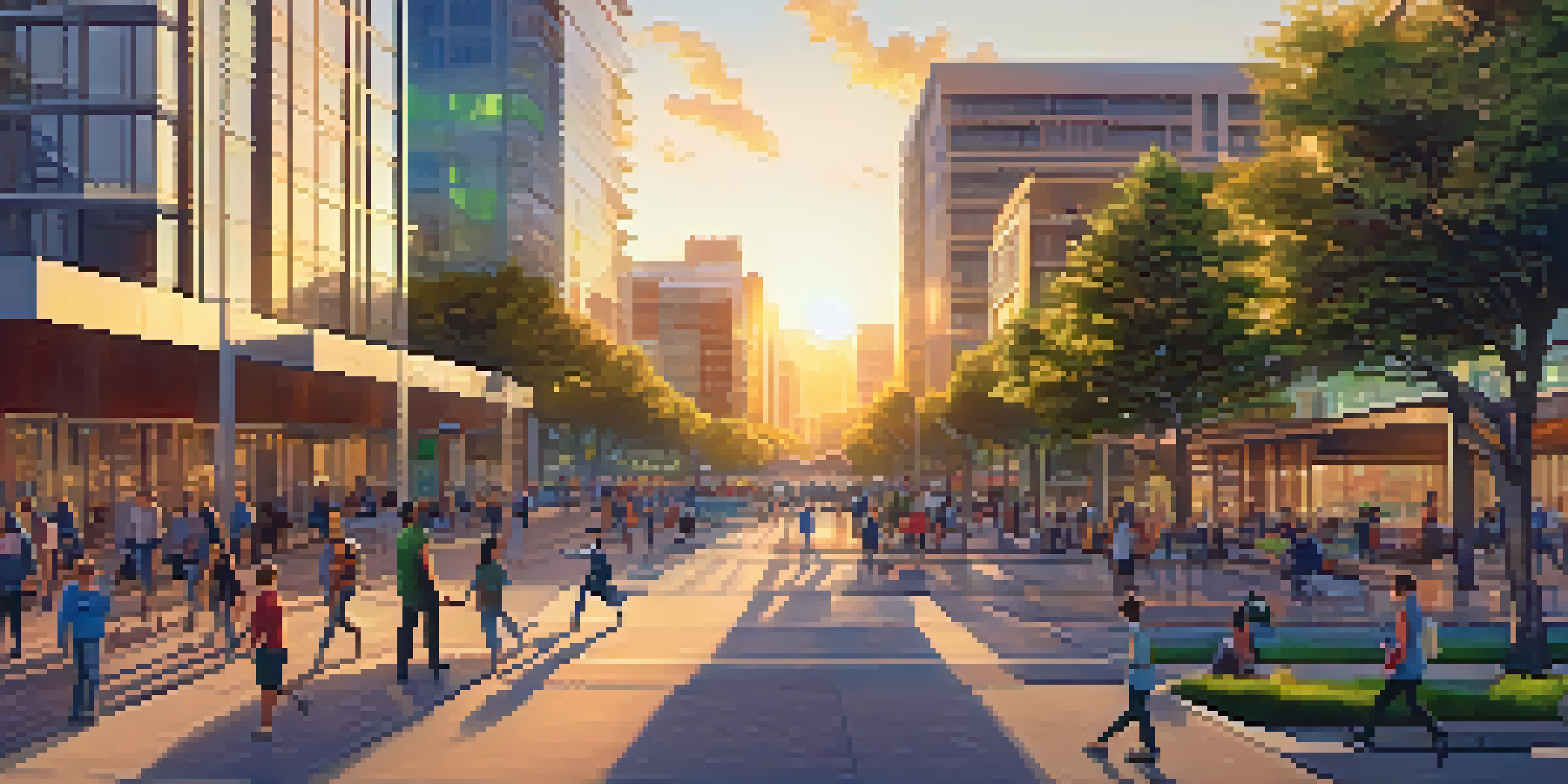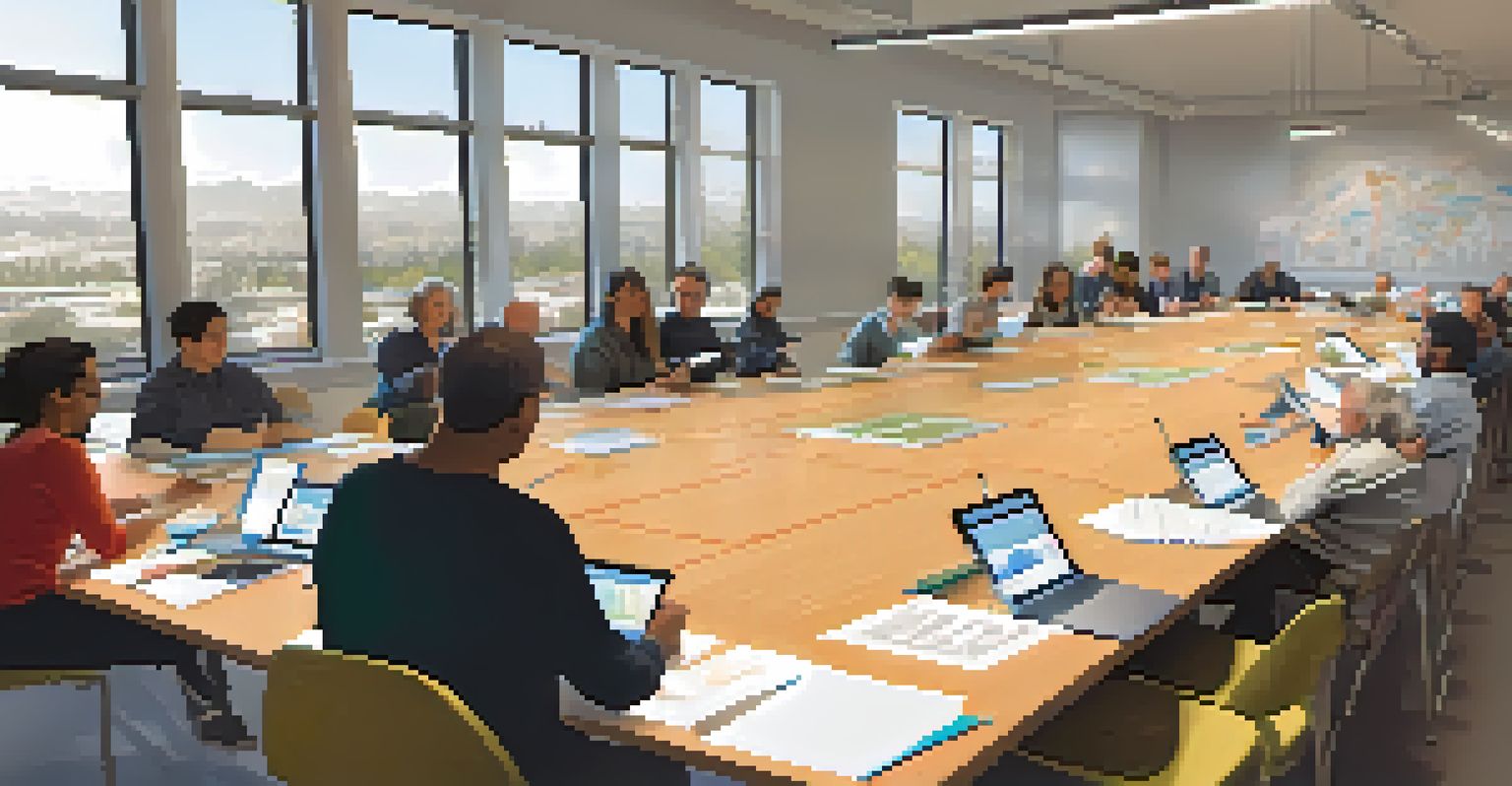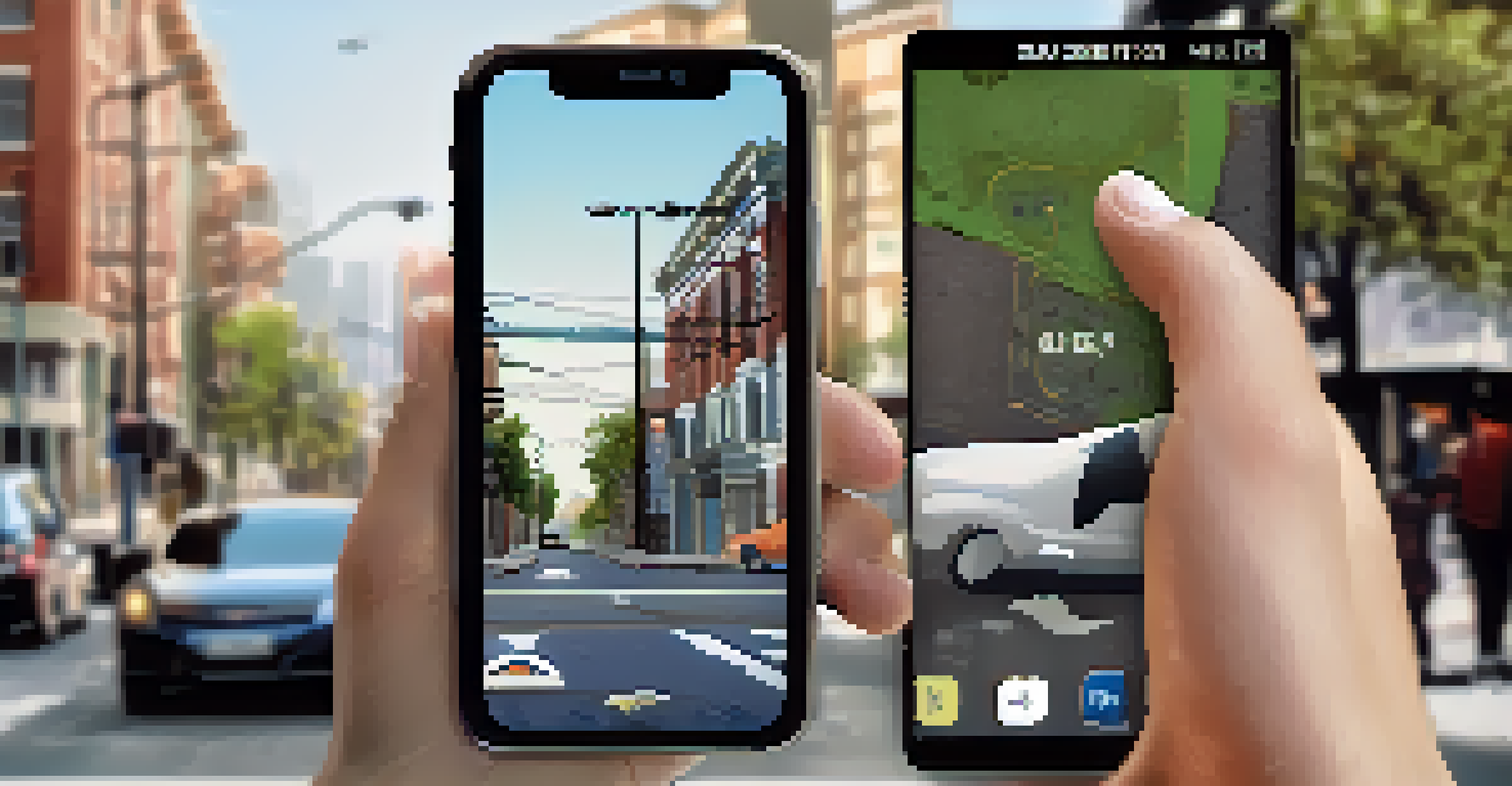The Role of Civic Tech in San Jose's Urban Planning Efforts

Understanding Civic Tech: A Key Player in Urban Planning
Civic tech refers to the use of technology to enhance civic engagement and improve government services. In urban planning, it acts as a bridge between city officials and residents, ensuring that everyone has a voice in shaping their environment. This collaborative approach not only fosters transparency but also builds trust between the community and city planners.
Technology is best when it brings people together.
In San Jose, civic tech tools range from mobile apps that allow residents to report issues, like potholes or broken streetlights, to platforms for community feedback on proposed projects. These tools empower citizens to take an active role in urban planning, making their concerns and priorities known. The result is a more inclusive and responsive planning process that reflects the needs of the community.
By leveraging civic tech, San Jose is not just modernizing its urban planning efforts; it's creating a model for how cities can harness technology to engage residents effectively. This approach not only improves decision-making but also enhances the overall quality of life for San Jose's diverse population.
Examples of Civic Tech Initiatives in San Jose
One standout example of civic tech in San Jose is the 'San Jose 311' app. This platform allows residents to report various non-emergency issues directly to city services, streamlining communication and response times. By making it easy for citizens to voice their concerns, the city can more effectively allocate resources and address problems as they arise.

Another initiative is the public engagement platform known as 'Engage San Jose.' This online tool allows residents to participate in discussions, surveys, and forums about urban development projects. By facilitating dialogue between the public and city planners, it ensures that community input is a vital part of the decision-making process.
Civic Tech Enhances Urban Planning
Civic tech tools empower residents to actively participate in urban planning, fostering collaboration and improving government responsiveness.
These initiatives highlight the importance of civic tech in fostering an engaged community. When residents have accessible tools to communicate with their government, it creates a dynamic environment where collaboration thrives, ultimately leading to better urban planning outcomes.
The Benefits of Civic Tech for Urban Planning
Civic tech brings several benefits to urban planning, primarily by increasing transparency and accountability. When residents can easily access information about city projects and initiatives, it reduces confusion and builds trust. This transparency allows for a more collaborative atmosphere where community members feel valued and heard.
Democracy is not a spectator sport.
Moreover, civic tech enhances data collection and analysis, providing city planners with insights that might otherwise go unnoticed. For instance, feedback collected through civic tech platforms can inform decisions about zoning changes, transportation improvements, and public spaces. This data-driven approach leads to more effective planning that meets the actual needs of the community.
Ultimately, the integration of civic tech in urban planning fosters a sense of ownership among residents. When they see their input shaping the community around them, it encourages ongoing engagement and investment in local issues, creating a vibrant, thriving urban environment.
Challenges Facing Civic Tech Adoption
Despite its many advantages, the adoption of civic tech in urban planning is not without challenges. One significant hurdle is the digital divide; not all residents have equal access to technology or the internet, which can exclude certain demographics from the conversation. This inequity can lead to gaps in representation, undermining the very goals of civic tech.
Another challenge is ensuring the quality and reliability of the data collected through civic tech platforms. If the information gathered is inaccurate or biased, it can lead to misguided planning decisions. City officials must prioritize data integrity and create systems that encourage honest and constructive feedback from the community.
Challenges in Civic Tech Adoption
Key obstacles include the digital divide, data reliability, and resistance to change, which can hinder effective civic tech implementation.
Finally, there's the issue of resistance to change within city governments. Traditional planning processes can be slow to adapt, and some officials may be skeptical about the effectiveness of civic tech tools. Overcoming this resistance requires education and demonstrated success stories to showcase the potential benefits of integrating technology into urban planning.
Case Study: Successful Civic Tech Integration in San Jose
A noteworthy case study in San Jose is the 'Alum Rock Avenue Urban Village' project, which utilized civic tech tools to engage residents in the planning process. By hosting online forums and workshops, city planners gathered valuable feedback from community members, ensuring that the development aligned with residents' needs and desires. This proactive approach not only improved the design but also fostered a sense of community ownership over the outcome.
The project demonstrated how civic tech can facilitate meaningful dialogue between city officials and residents. Community members were able to voice their opinions on various aspects of the project, from transportation options to public spaces. This input was instrumental in shaping a plan that reflects the unique character of the area.
As a result, the Alum Rock Avenue Urban Village has become a model for future developments in San Jose. It illustrates the potential of civic tech to create inclusive planning processes that prioritize community input, ultimately leading to successful urban development.
Future Trends in Civic Tech for Urban Planning
Looking ahead, the future of civic tech in urban planning is promising, with advancements in technology paving the way for even greater community engagement. For instance, the rise of artificial intelligence and machine learning can enhance data analysis, allowing city planners to make more informed decisions based on real-time feedback from residents. This could lead to more adaptive and responsive urban planning practices.
Additionally, the integration of virtual and augmented reality technologies may revolutionize how residents experience urban planning projects. Imagine being able to visualize a new park or building in your neighborhood before it's constructed! This immersive approach can facilitate more informed discussions and help residents better understand proposed changes.
Future of Civic Tech Looks Bright
Advancements in technology, like AI and virtual reality, promise to further enhance community engagement in urban planning initiatives.
As civic tech continues to evolve, it's essential that cities like San Jose remain committed to fostering inclusive environments where everyone can participate. By embracing these trends, urban planners can ensure that civic tech remains a powerful tool for enhancing community engagement and improving the urban landscape.
Conclusion: Civic Tech's Vital Role in San Jose's Future
Civic tech is not just a trend; it's a vital component of effective urban planning in San Jose. By facilitating communication and collaboration between residents and city officials, it empowers communities to take an active role in shaping their environment. As we've seen, the benefits are numerous, from increased transparency to better data-driven decision-making.
However, to fully harness the power of civic tech, it's crucial to address the challenges that come with it. Ensuring equitable access to technology, maintaining data integrity, and overcoming resistance to change are all essential steps in this journey. With a concerted effort, San Jose can create a more inclusive and responsive urban planning process.

In conclusion, as San Jose continues to grow and evolve, the integration of civic tech will play a key role in building a vibrant, engaged community. By prioritizing citizen participation, the city can create a future that reflects the hopes and aspirations of its residents, ultimately leading to a thriving urban environment for all.